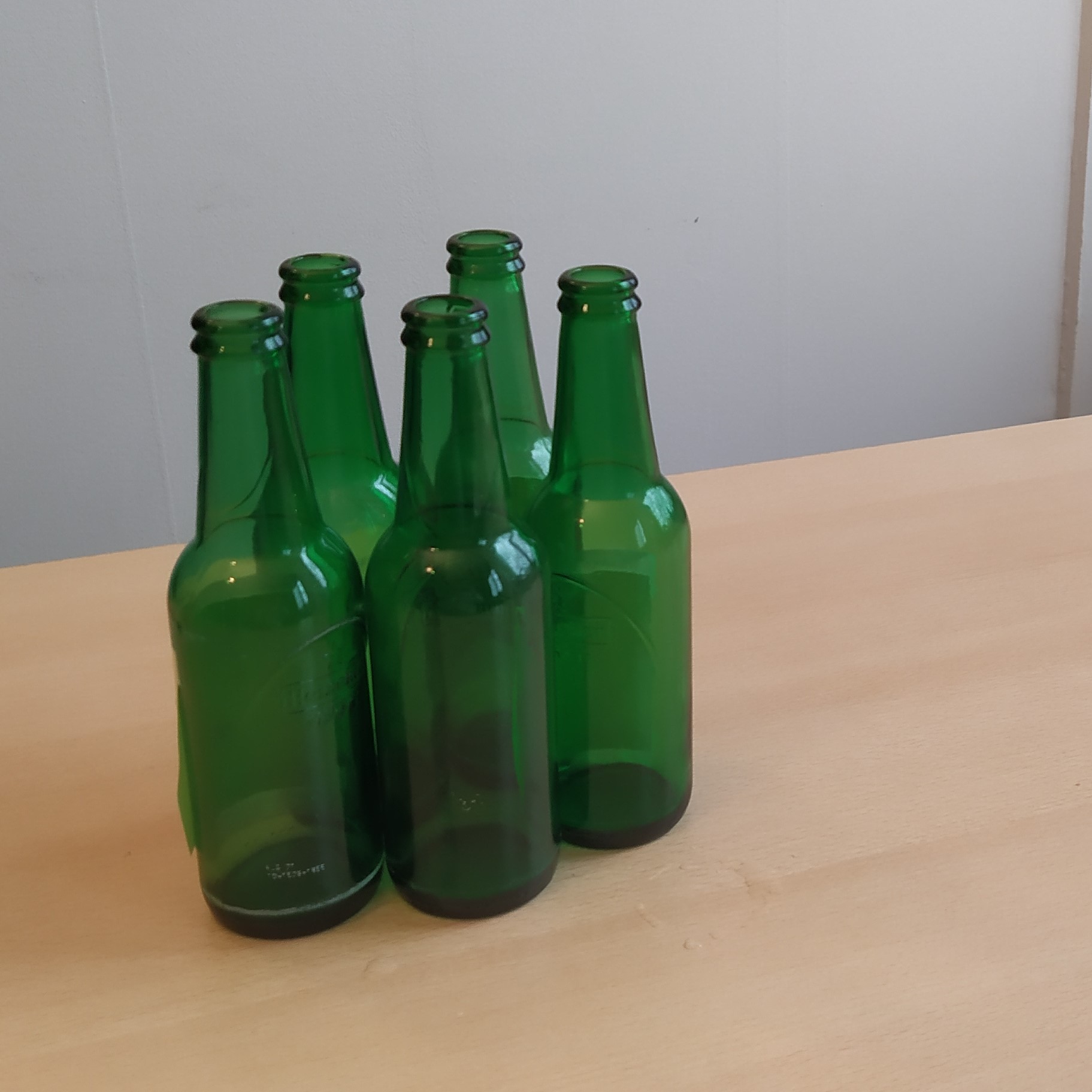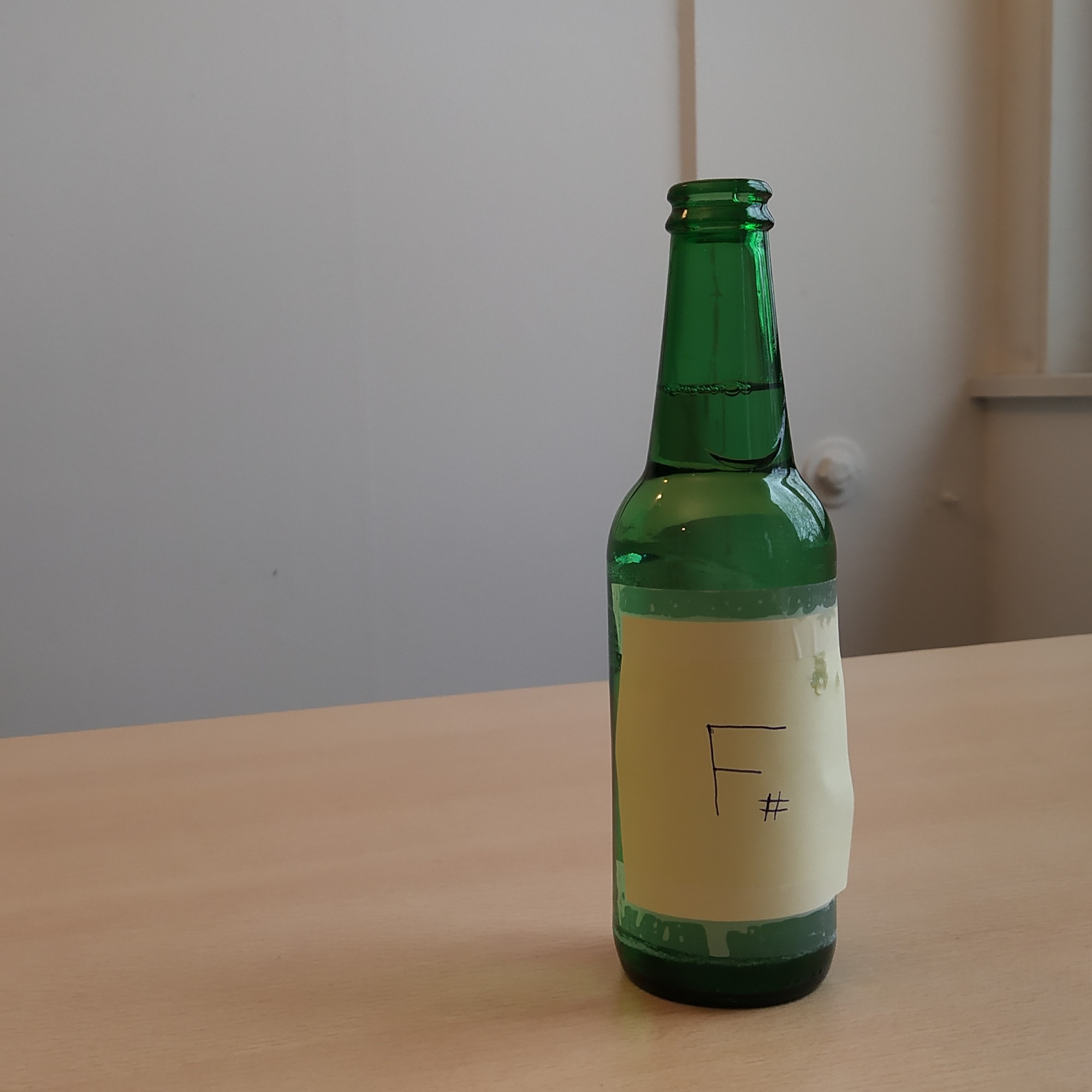3.7.2 Bottle organ
Course subject(s)
Module 3: Waves
In this engineering and application video you will be shown how to create your own musical instrument using the theory from the module waves. First, watch the video below to get a general idea of the concept and after that use the detailed instructions to make your own bottle organ.
1. Get yourself some empty bottles

Any type of empty bottle would do. In the video above empty beer bottles were used.
2. Find a song to play
Look for the sheet music of the song you want to play online. Be mindfull of the number of different notes in your song. You need an empty bottle for each unique note. If you do not know how to read sheet music, you may use the following tutorial to learn more about it.
Next, you should convert the notes into frequencies, the table on this website may prove usefull for this.
3. Fill your first bottle

The notes you hear are a result of the standing waves that are formed in between the surface level of the water and the top of the bottle. As a first approximate, you may use f0=v4L with f0 the fundamental frequency, v=343 m/s the speed of sound and L the distance between the watersurface and the top of the bottle. This is the formula for a standing wave inside a pipe with one open and one closed end.
Unfortunately, the bottles we use are not perfect cylinders so the note’s actual frequency is slightly different to the one that follows from the formula. You can measure the pitch of your sound using the following website. Consequently, readjust the water level untill you have reached the desired note.
4. Fill the other bottles

Repeat step 3 for the order notes in the song you want to play. Make sure to label your bottles so you remember which bottle belongs to each note.
5. Play your song
Now that you have filled all your bottles you can play your song by blowing air over the tops of the bottle. You can share a soundclip of your song in the discussion forum below.

Pre-University Physics by TU Delft OpenCourseWare is licensed under a Creative Commons Attribution-NonCommercial-ShareAlike 4.0 International License.
Based on a work at https://online-learning.tudelft.nl/courses/pre-university-physics/



